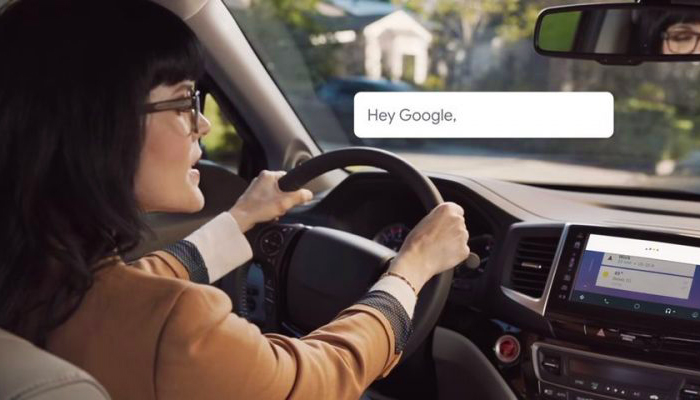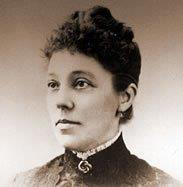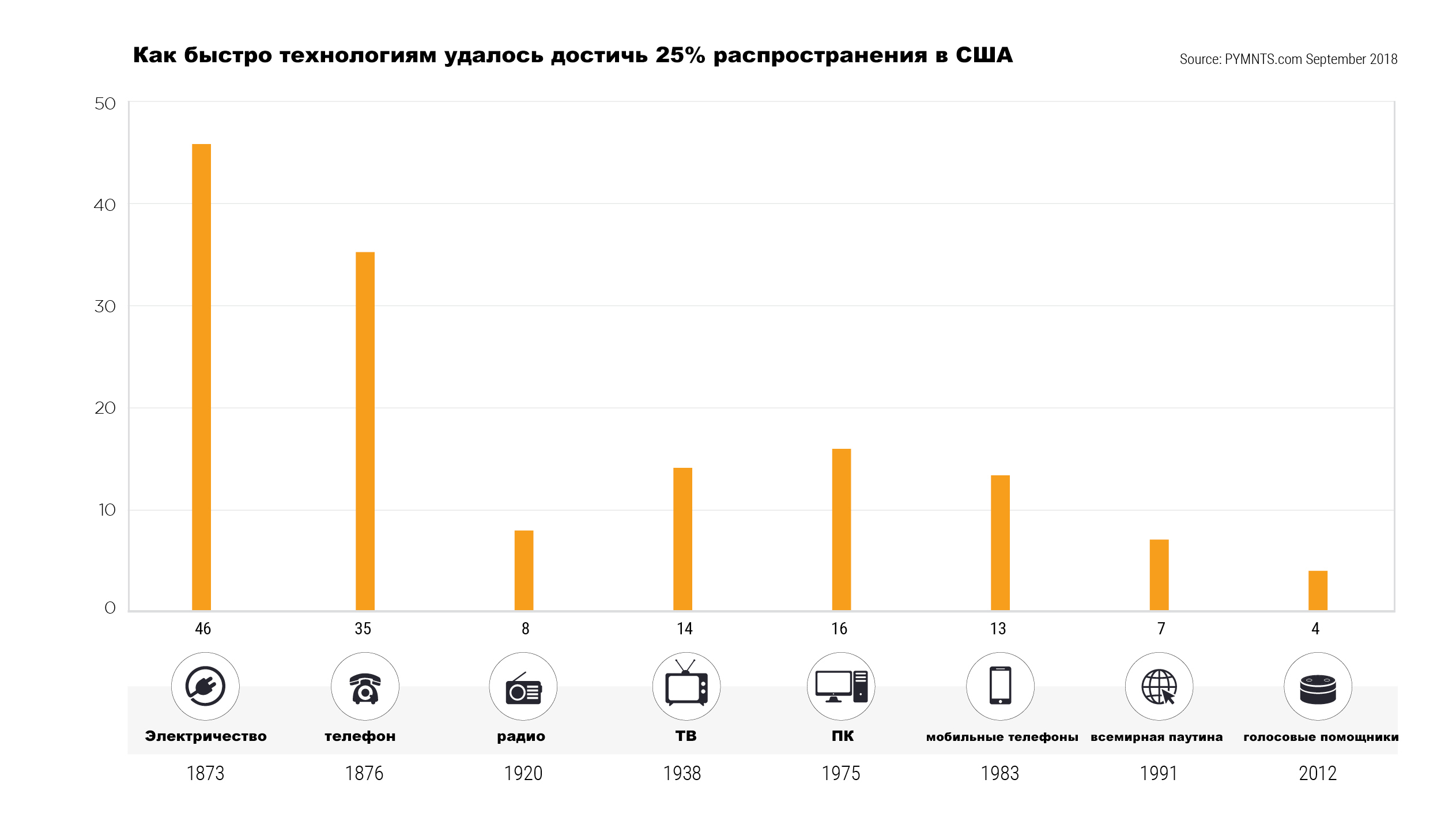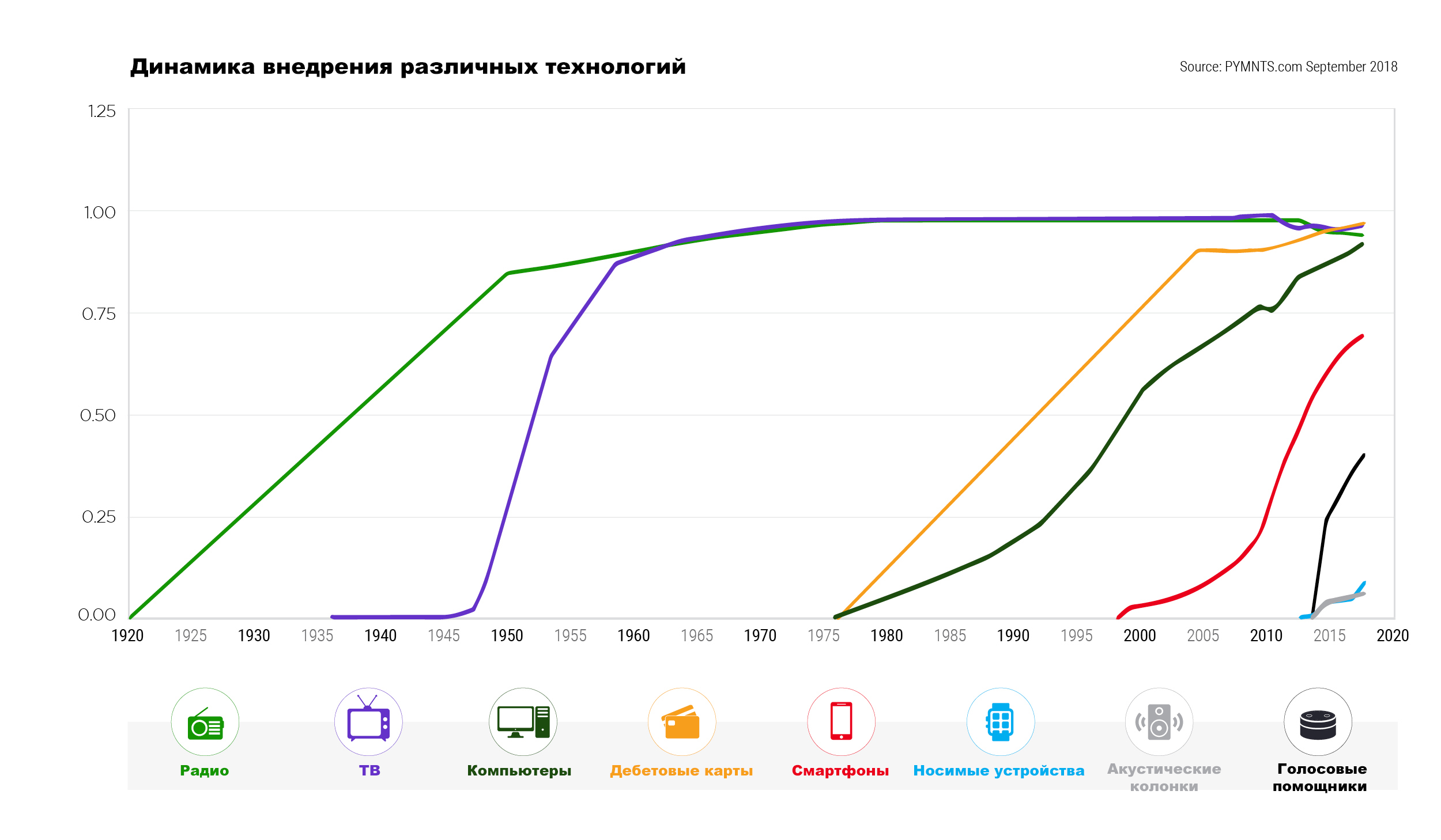Voice assistants driving a car: for whom the future
- Transfer

Before the advent of Alexa , Bixby , Siri and Google Assistant was Emma Nut .
Emma Nuth

Emma was born in 1860 in a small town in Maine, and in 1878, Alexander Graham Bell recruited her and made her the first female telephone operator in history.
The first phones, invented by Bell, were sold in pairs and could only call each other. Bell understood that for the growth of sales and wide distribution of telephones it is necessary to create a network that allows connecting different telephone users. The level of technology development at that time did not allow to automate this process, therefore, to implement the idea, Bell needed people who would make such connections manually.
First, a group of boys was hired for this purpose. They intercepted calls to the central switchboard and asked the caller who to connect to. Moving around the room, from floor to ceiling covered with switching boards, they switched wires. The decision was not perfect. The boys were often impolite with their customers and were making jokes against which even their dexterity and agility ceased to seem an advantage.
Then Bell decided that women would be better suited for this role.
Applicants were selected long-handed (due to the height of the switching panels) and unmarried, as the work was round-the-clock. To translate such a schedule into reality, Bell decided to install switching boards in the houses of his workers.
And the first of his employees was Emma Nut in 1878.
As it soon turned out, it was a brilliant idea, which became a turning point in the history of telephony.
Power of female voice
Bell's customers praised Nuth's calm and friendly voice and her technical skills. Soon, Bell hired her sister and other women. They coped with the physical component of the work, they had a more pleasant manner of communication, and the overall level of service was stable.
Over the years, women, of course, were replaced by automatic switches, which became the basis of modern automatic telephone systems. But it was Nuth and her voice that became intermediaries who helped launch the development of telephone networks to the level to which we are accustomed today. She worked with Bell and the Boston telephone dispatch company for another 30 years before retiring.
At the end of Emma Nuth’s thirty-year career, about 25% of all Americans acquired home phones.
Voice as mediator
139 years after the launch of the first phone, another pleasant female voice appeared in the world, contributing to the development of a new generation of voice-activated networks, Alexa.
Alexa and its modern-day voice assistants took only 4 years to reach 25% of the prevalence among the American population. This is an amazing penetration rate.

Amazon is not the first company to capitalize on user interest in using voice commands, which can be an alternative to text input or swipe and give access to content and services. But it was Amazon that created the middleman with a pleasant voice, intending to launch and unleash a whole ecosystem of voice control.
Today, this ecosystem includes developers creating skills for Alexa, software packages that allow third-party companies to integrate Alexa into their own devices, and a whole series of Amazon devices that allow consumers to use Alexa and its skills in their homes and offices.

Now these devices are becoming available in cars. The recent launch of Echo Auto in the wake of the August release of the Amazon Auto SDK unequivocally indicates that Alexa intends to firmly settle in the passenger seat of the American car owner.
Google's recent announcements also make it clear that the company is not going to allow Alexa to host the market. Technology giant has entered into an agreement with the automotive allianceRenault-Nissan-Mitsubishi on the use of the Android operating system as the embedded OS of the on-board computers of cars produced by the members of the alliance. It is worth noting that this group of companies sells more cars than any other manufacturer in the world. Last year, their sales amounted to 10.6 million units.
The Treaty enters into force in 2021. And although three years is a long time, this project for Google is a good start in terms of the development and launch of 5G networks, as well as the increasingly important role cars will play in the world of the Internet of things.
Be that as it may, consumers don't want to wait that long. And they found a way to get this functionality right now.
Road race voice systems
Cars for many years considered in the context of a powerful traffic flow, but not so long ago they also turned into a kind of network-connected devices.
Telematics systems track cargo delivery processes and measure their effectiveness over the past 20 years. But the transformation of cars into network devices occurred not so much at the initiative of manufacturers, but because consumers began to use various devices to connect to networks inside cars.
Consumers connect smartphones to embedded on-board car computers, call them and listen to playlists in Spotify. Not very attractive, but highly functional attachments to the windshield or dashboard made it easier for drivers to access navigation systems and other applications while driving a car.
Last year's study revealed that the total amount spent by car owners on purchases and payments during trips to work was $ 212 billion . Motorists make a variety of orders, from morning coffee to food or lunch with pickup. They use applications to search for gas stations and parking lots, and sometimes they pay for such services directly in the applications.
Manufacturers want to benefit from all these actions. The question is, will they succeed, and will consumers allow it?
Fearing to put the initiative in the hands of technology intermediaries like Apple, Google and Amazon, many automakers are working with third parties to develop their own branded applications for dashboards.
For example, Ford has created its own system, although Alexa is available in some of its models. Mercedes-Benz announced the launch of a joint project to create a similar solution. Xevo products , a major player in this segment, are used in 25 million cars and allow manufacturers to accumulate a unique branded experience that can be monitored from the moment you purchased the car.
But in order to experience the benefits of certain brands, consumers will have to buy a new or at least not too old used car. Such purchases are not made every day, and people want a new experience now.
At the same time, statistics show that modern consumers update their cars less often than ever.
On the roads of the United States today, 272 million cars . The average age of an American car is 12.1 years , and for the period from 2007 to 2017, this figure increased by 2 years. In 2017, 17.1 million cars were sold in the United States . Approximately 6.7 million of them are passenger cars, the rest are light-duty trucks and crossovers.
Consumers refrain from changing the car for various reasons. New cars cost more than many people can afford, so they have to buy used cars. Their sales in the USA today are twice as high as those for new cars.
Modern cars are made with better quality and therefore can go without repairs longer. The design of many models over the years varies slightly, so the cars remain aesthetically attractive. On the whole, people began to drive less.
This does not create problems for phone applications that have been using Bluetooth for a long time to connect to car systems. But such factors delay the introduction of smart on-board computers, slow down the development of ecosystem applications for them and a set of critical mass of users.
To speed up the process, automakers better share this “trip” with technology giants, especially the two of them.
New car sales experience
The impact of voice control on the commercial field has been studied since in 2014, Amazon appeared on the scene with its Alexa. It was she who, not represented Siri two years before her, turned her voice into an effective way of interacting with the consumer.
Amazon made Alexa and its supporting devices the center of the consumer universe: first in their homes, and then in smartphones that people always carry with them. Today, Alexa has gained almost 62% of the voice control market and can demonstrate over 30,000 user experience enhancements.
Alexa started out as a voice from a cylindrical device that was usually put somewhere in the kitchen. She joked, turned on the music and voiced the weather forecast at the first request. Conversation with an inanimate object and obtaining relatively adequate responses to simple commands became a convenient and familiar experience for consumers.
Thus, Alexa got the opportunity to learn from consumers, to better understand their speech and context.
Over time, people got used to Amazon's voice assistant and made it their home command center. And the assistant, in turn, began to give more reasonable answers. Today, Alexa's assistant is used on phones and home devices, controlling lights, security systems, locks, curtains, and instruments using voice commands alone.
However, Amazon conceived an assistant not only as a switch for everything and everyone.
Amazon has always been a commercial site. Their marketplace is a digital intermediary and payment network in one bottle, allowing the buyer to find the desired product. The ecosystem built by the company over the past 20 years is aimed at creating lucrative offers for users and vendors, including outside of it.
Alexa was created as a kind of layer between consumers and the Amazon platform. Initially, they received information from Alexa, then they assigned tasks to her, and then they began to use access to services involving commercial interaction: ordering flowers or pizza, calling Uber.
In addition, Alexa has never been “sharpened” for specific devices, channels or usage scenarios. It should accompany the user, wherever he is, including driving a car.
This, of course, does not mean that Amazon and Alexa have already taken control of automobile commerce, because such an assertion is not true even for voice commerce.
Google and its voice assistant also took root in the search and commercial systems. Consumers are used to “asking Google” about everything, including about where to buy this or that product. The company also introduced a series of devices that have gained more than 25%.market voice control, and gathers under its auspices a group of merchants, including Walmart, ready to ask the Amazon heat in the fight for profit. During the trips, motorists constantly turn to Google Waze and Maps, simultaneously using the commercial offers built into them.
As a result, the main competition does not arise among car manufacturers, who want to build beautiful, branded computers that respond to voice commands onboard computers and are afraid that technology giants will take control of this sphere. Innovative technologies have already come to this segment, because consumers have so wanted.
Echo Auto costing $ 29.99 ($ 49.99 soon) will help Alexa get behind the wheel of any car on the road. This device will probably be under many Christmas trees this year. For Alexa, the inclusion of a car in a commercial ecosystem means, first of all, connecting a consumer with the subsequent opportunity to make purchases right on the road.
But do not discount Google. It has its advantages and a powerful Android ecosystem in the background. Also, remember about Apple. Although this company, with its 4% share in the voice control market, is now infinitely far from successful, it has all the motives and financial tools to get back into the game.
One way or another, this will be a race between technology giants that will manage to launch rich ecosystems inside and outside cars. And at least one of these technology giants uses a pleasant female voice as an intermediary in communicating with the consumer. And automakers who do not want to make room, there will be nothing to do in the contest.

